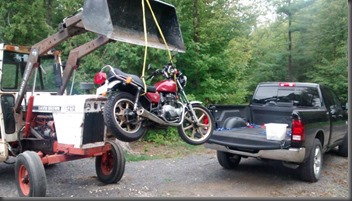When you as a biker come up behind another biker, who is a stranger, do you go into the stagger formation or do you treat it like another vehicle on the road and ride directly behind?There was a lot of talk about “respect” (whatever that means in this context) and whether it’s safe to assume the lead rider actually wants a riding buddy or would rather you just pass and carry on. But to me the debate boiled down to whether two riders (strangers or not) should ride in line, as you would if you were on 4 wheels following another car, or take a stagger formation with the lead rider in the left tire track of the lane and the following rider in the right tire track.
Most posters said always stagger and some referred to the following excerpt from the Ontario Motorcycle Riders Handbook as being the definitive authority on the matter. (One poster even suggested it was the law. It isn’t.)

Back in the day when I was teaching advanced rider programs the thinking was that the following rider should also assume a left tire track position to help protect both riders’ space, because by doing so it forced any passing vehicles to make a complete lane change before passing. This would also apply to larger groups in a stagger formation. If the sweep, or tail gunner, would normally find him/herself in the right tire track position they should move to the left (and open up a bit more following space behind the rider immediately in front) to protect the lane.
The same principle would apply on a multi-lane freeway. In all but the left-most lanes the last rider should be in the left tire track, but in the left-most lane the last rider would move over and ride in the right tire track, thus blocking any in-lane passing attempts.
I know I have some readers who are active in motorcycle training and others who are Road Captain qualified. What do you think? What would you do?





